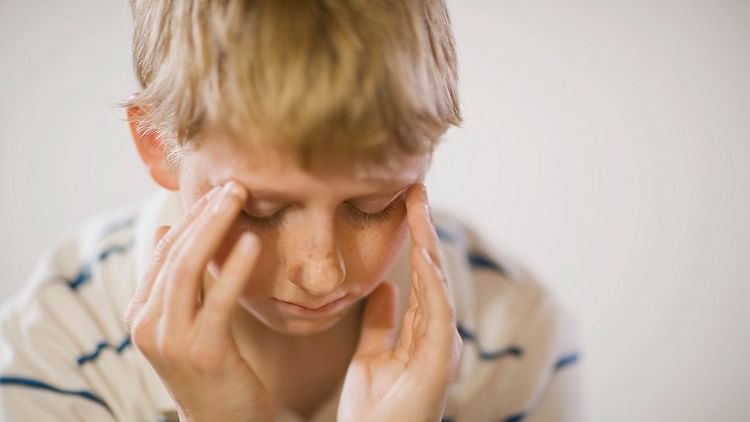Vertigo in children may go undiagnosed as they often are not able to describe their problem clearly.
It is a surprise to many people that the ear’s primary function is not hearing, but maintaining the balance of the body. The vestibular system acts as a gyroscope and accelerometer, sensing the head’s position and movement and the body’s position. It then sends this information to the brain, which coordinates various parts of the body to maintain balance.
When things go wrong in the balance system, the person gets a feeling of spinning or unsteadiness, which is called vertigo. Vertigo and dizziness are considered disorders affecting the older population, but they may be seen in children as well. Vestibular disorders are seen in around 6% of children between the ages of three to 17 years. Children with hearing loss often have associated vestibular dysfunction as well.
Vertigo in children may go undiagnosed as they often are not able to describe their problem clearly. Parents may mistake the complaints to be avoidance behavior or an excuse to miss school. These children require a patient hearing and support for them to communicate what they are feeling.
Why does vertigo occur in children?
Vertigo can occur due to many reasons. Various diseases of the inner ear or the brain can cause the imbalance. Infections of the ear can lead to acute vertigo with vomiting, accompanied by pain in the ear and high fever. A swollen congested eardrum is seen in these children, and they need to be treated with antibiotics.
A form of migraine, called vestibular migraine, is one of the commonest causes of vertigo in children. These kids present with repeated episodes of spinning, usually lasting for a short duration. Younger children may feel scared when these episodes occur and try to cling to someone. After a few minutes, they are better and ready to play again as if nothing happened. They often suffer from motion sickness as well. Children with vestibular migraine often have a family member who also suffers from headaches or vertigo. These children respond well to lifestyle modifications like regular eating and sleeping schedules. The pandemic has dramatically increased the screen time of children. These children need to reduce their exposure to screens, including mobile phones and TV. They also should avoid playing games on the screen.
Another cause of vertigo could be BPPV, in which calcium carbonate crystals from the inner ear get dislodged from their correct place. This is usually seen after injuries. Diagnosis is made by a test called videonystagmography or VNG. Infrared cameras are used to detect the position of the dislodged crystals. There are 14 sub-types of BPPV according to the position of the crystal within the inner ear. Once the position is detected, repositioning maneuvers like the Epley’s or Zuma maneuver are performed to bring the crystals back to their correct position.
Other rarer causes of vertigo in children include epilepsy, Meniere’s disease (where the pressure of the inner ear increases), enlarged vestibular aqueduct (a congenital developmental disorder presenting with increasing hearing loss and falls), and behavioral disorders.
How is vertigo in children diagnosed?
Children require a friendly and patient hearing of what they are feeling. They must feel that we believe what they are saying. Giving the impression that they are too young to understand what they are feeling or just seeking attention often makes them not express their symptoms which delays the diagnosis and treatment. After a detailed history, specialized diagnostic tests are required to find the exact cause of vertigo.
Various neurotological tests like Videonystagmography (VNG), Computerized dynamic visual acuity (DVA), Craniocorpography (CCG), Subjective visual vertical (SVV), and Audiometry are used in diagnosis. To carry out the correct diagnosis and treatment of vertigo and dizziness patients, we have established NeuroEquilibrium, the world’s largest and most advanced chain of Vertigo and Balance disorders clinics with over 125 centers in India. The technology helps identify the triggers of the vertigo episodes and accordingly identifies the origin of the disorder. It offers a customized rehabilitation program and a patient monitoring module that efficiently treats patients with vertigo, dizziness, and balance disorders.
Can vertigo in children be treated?
Vertigo is definitely treatable once the underlying cause is detected. Technological advancements have increased the effectiveness of the treatment outcome by providing an accurate diagnosis. Depending on the diagnosis, the type of medical treatment or Vestibular rehabilitation is decided.
A parent must look out for certain symptoms in a child, like repeated episodes of falling, difficulty in focusing, or vomiting. The vertigo episodes can show up as the child tries to avoid certain activities or doesn’t want to play. Younger children may get very scared when the episodes occur, resulting in phobias as well. These children must be evaluated at the earliest to ensure a rapid return to normal activities.
Visit us at: https://www.neuroequilibrium.in/understanding-vertigo-and-balance-disorders-in-children/





